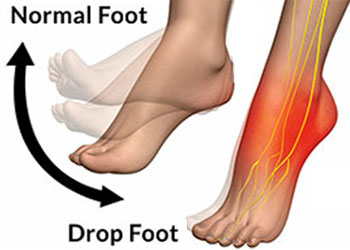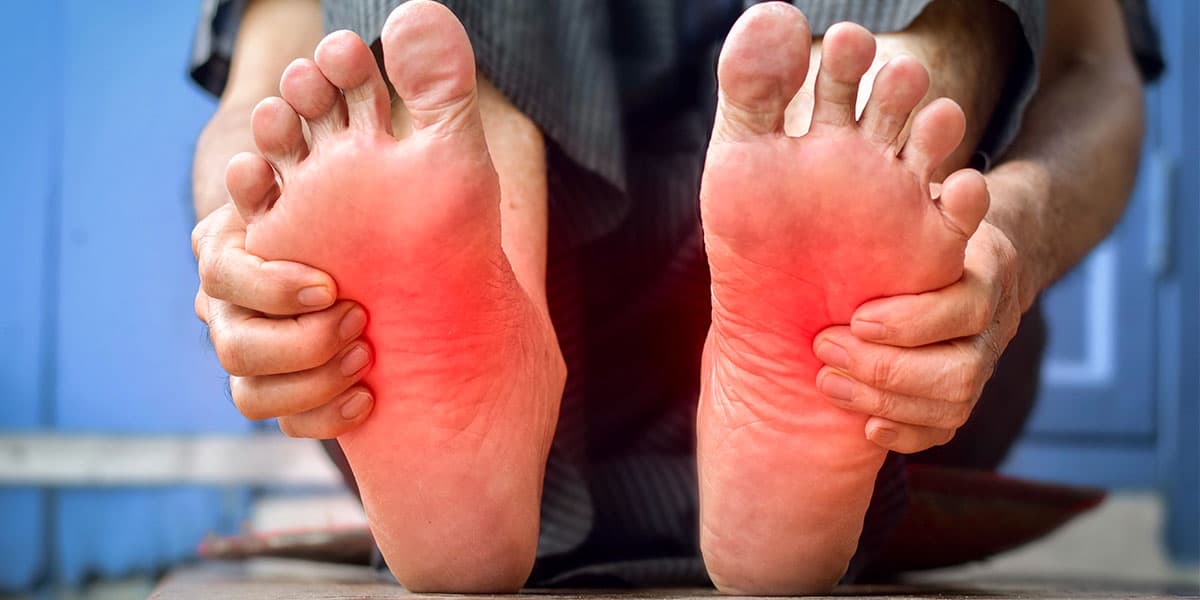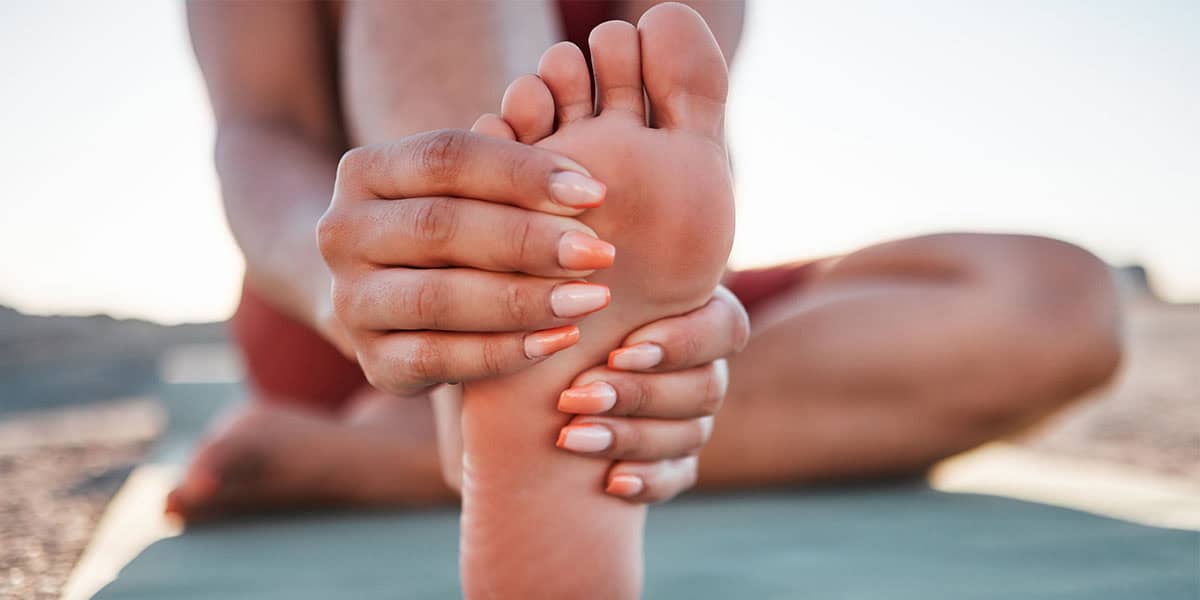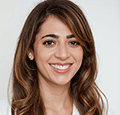Drop Foot: symptoms, causes and treatments
- Published 11/1/2023
- Last Reviewed 12/13/2023

What is drop foot?
Foot drop, also called drop foot, is a term used to describe difficulty lifting the forefoot. If you have foot drop, you may experience trouble clearing the floor with the front part of your foot when walking, sometimes causing your foot to drag. Severe cases of drop foot can adversely affect your quality of life, making it challenging to do everyday tasks like walking and driving.
While it is a medical condition, drop foot itself is not a disorder or a disease but a symptom of another, often neurological, health concern.
- Previous
- Condition
-
Dr. Gina Nalbandian specializes in reconstructive and revisional foot and ankle surgery, foot and ankle trauma, sports medicine, lapiplasty, and limb salvage.
While an undergrad, Gina volunteered at free clinics, hospitals and with the AIDS Project in Los Angeles, all the while exploring various careers in medicine. She also conducted and published her research in the lab on campus. “I soon found out that the lab life wasn’t for me, and I wanted a more hands-on approach to medicine,” she says.
Dr. Nalbandian did her residency at St. Elizabeth’s Medical Center in Boston, which is affiliated with Tufts University. As a resident, she served an academic coordinator and chief resident.
A resident of Sherman Oaks, Gina continues to volunteer her expertise with the Special Olympics, Happy Feet (providing foot care at homeless shelters), and the Boston Marathon.
 There are only a couple of things I was unhappy with. 1. I was never told about the option for purchasing a waterproof boot c...Elaine S.
There are only a couple of things I was unhappy with. 1. I was never told about the option for purchasing a waterproof boot c...Elaine S. The doctor and staff always provides excellent treatment and service.Dorothy W.
The doctor and staff always provides excellent treatment and service.Dorothy W. SO HAPPY TO FINALLY FIND A DOCTOR AND ASST I FEEL COMFORTABLE WITH !! I WAS VERY PLEASED WITH THE DR GINA AND HER MALE ASST T...Marguerite S.
SO HAPPY TO FINALLY FIND A DOCTOR AND ASST I FEEL COMFORTABLE WITH !! I WAS VERY PLEASED WITH THE DR GINA AND HER MALE ASST T...Marguerite S. They really try hard to make me feel complete and on point.Lester S.
They really try hard to make me feel complete and on point.Lester S. The doctor was very thorough and caring.Erika F.
The doctor was very thorough and caring.Erika F. Excellent job. Have a Merry Christmas and a Happy New YearValerie S.
Excellent job. Have a Merry Christmas and a Happy New YearValerie S. Office and examination rooms are very clean and comfortable. Staff are very professional and friendly.Myrna M.
Office and examination rooms are very clean and comfortable. Staff are very professional and friendly.Myrna M. Recenlty visited, He explains everything before he does it. You feel well informed and your feet will feel amazing.John J.
Recenlty visited, He explains everything before he does it. You feel well informed and your feet will feel amazing.John J. I have been to other locations and it was ok. The staff at the Westlake Village location is exceptional.Lynne B.
I have been to other locations and it was ok. The staff at the Westlake Village location is exceptional.Lynne B. Appointments always went smoothlyArthur H.
Appointments always went smoothlyArthur H. Dr. Franson has seen my entire family for foot/ankle problems and treated and solved all of them. The office staff is incredibl...H. W.
Dr. Franson has seen my entire family for foot/ankle problems and treated and solved all of them. The office staff is incredibl...H. W. Great serviceDavid K.
Great serviceDavid K.
-
 Listen Now
How Many Steps Do I Need A Day?
Read More
Listen Now
How Many Steps Do I Need A Day?
Read More
-
 Listen Now
Pediatric Bunion Surgery
Read More
Listen Now
Pediatric Bunion Surgery
Read More
-
 Listen Now
What To Do When Your Toenail Is Falling Off
Read More
Listen Now
What To Do When Your Toenail Is Falling Off
Read More
-
 Listen Now
Non-Surgical Treatment for Plantar Fasciitis – What Are Your Options?
Read More
Listen Now
Non-Surgical Treatment for Plantar Fasciitis – What Are Your Options?
Read More
-
 Listen Now
What Is Erythromelalgia?
Read More
Listen Now
What Is Erythromelalgia?
Read More
-
 Listen Now
Swollen Feet During Pregnancy
Read More
Listen Now
Swollen Feet During Pregnancy
Read More
-
 Listen Now
15 Summer Foot Care Tips to Put Your Best Feet Forward
Read More
Listen Now
15 Summer Foot Care Tips to Put Your Best Feet Forward
Read More
-
 Listen Now
Moore Balance Brace: Enhance Stability and Prevent Falls for Better Mobility
Read More
Listen Now
Moore Balance Brace: Enhance Stability and Prevent Falls for Better Mobility
Read More
-
 Listen Now
How To Tell If You Have Wide Feet
Read More
Listen Now
How To Tell If You Have Wide Feet
Read More
-
 Listen Now
What Are Shin Splints?
Read More
Listen Now
What Are Shin Splints?
Read More
-
 Listen Now
Do Blood Pressure Medicines Cause Foot Pain?
Read More
Listen Now
Do Blood Pressure Medicines Cause Foot Pain?
Read More
-
 Listen Now
Bunion Surgery for Athletes: Can We Make It Less Disruptive?
Read More
Listen Now
Bunion Surgery for Athletes: Can We Make It Less Disruptive?
Read More
-
 Listen Now
Should I See a Podiatrist or Orthopedist for Foot Pain and Ankle Problems?
Read More
Listen Now
Should I See a Podiatrist or Orthopedist for Foot Pain and Ankle Problems?
Read More
-
 Listen Now
Bunion Surgery for Seniors: What You Need to Know
Read More
Listen Now
Bunion Surgery for Seniors: What You Need to Know
Read More
-
 Listen Now
Could Feet Be the Windows to Your Health?
Read More
Listen Now
Could Feet Be the Windows to Your Health?
Read More















